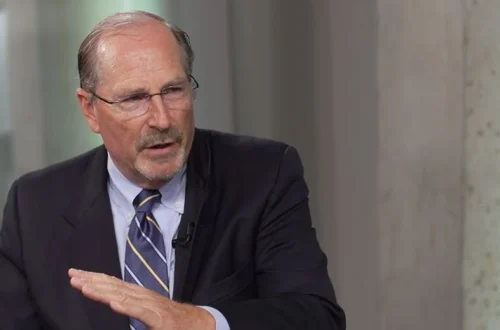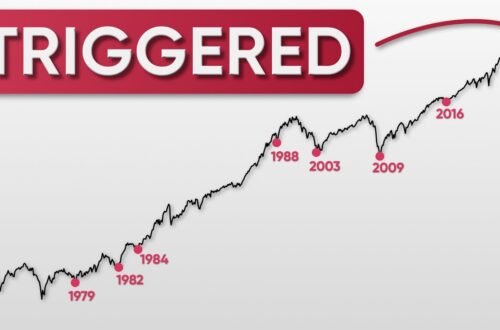US stocks soared Wednesday, but the S&P 500 is still trying to climb out of a slump instigated by President Donald Trump’s trade war.
After hitting a record high in February, the S&P 500 dropped into correction in March as Trump unveiled his plan for tariffs. The benchmark index as of Wednesday was still down 12.5% from its peak two months ago. (A 10% decline from a peak is considered a correction. A 20% decline from a peak is considered a bear market).
The S&P 500 has shed $6.5 trillion in market value since its record high in February, according to Howard Silverblatt, senior index analyst at S&P Dow Jones Indices.
How Long Until the Bottom?
The truth is: No one can know for sure.
The market hit its lowest closing price this year on April 8, down 18.9% from its February peak. The S&P 500 has yet to test that low again, and it’s anyone’s guess whether the market continues climbing higher.
While uncertainty is rife, history can serve as a guide as to when the S&P 500 might find a bottom.
What History Tells Us
The S&P has had 24 corrections since the end of World War II, according to Sam Stovall, chief investment strategist at CFRA Research.
“Swift declines tend to be shallow and short-lived,” he said. “History is a great guide, but it’s never gospel, so we’ll have to wait and see whether that will hold true.”
Historically:
- It takes the index 133 days on average to find a bottom (from peak to trough).
- It takes 113 days on average to recover.
- It takes 77 days to confirm a correction.
→ This year? Just 22 days.
“A Manufactured Correction”
“The only problem is that this is what I call a manufactured correction, meaning that it started because Trump initiated a trade war,” said Stovall. “It is because of what the current administration is doing.”
Will April 8 Hold?
The S&P 500’s closing price on April 8 was 4,982.77.
“In order for the April 8 lows to hold, investors must see enough of a trade policy shift to give them hope that the worst has passed,” said Nick Colas, co-founder of DataTrek Research.
Colas referenced the 1987 crash, when the S&P 500 fell 20.5% in a single day. It then rebounded and retested its lows before finishing the year up.
“Investors saw that as an ‘all clear’ sign,” Colas said.
Ed Yardeni, president of Yardeni Research, agrees a retest is likely:
“If so, then the market may be forming a bottom,” Yardeni said.
V-Shaped Recovery? Not So Fast
In 2023, the S&P 500 corrected and recovered in just 24 days. But this time, Adam Turnquist of LPL Financial is cautious:
“It’s still very defensive right now, which gave us pause in terms of calling for any type of V-shaped recovery,” he said.
Turnquist pointed to April 8 again as a possible turning point:
- The CBOE Volatility Index (Wall Street’s fear gauge) peaked.
- CNN’s Fear and Greed Index hit its lowest level.
“What comes next is a grind sideways,” said Kim Abmeyer, certified financial planner and founder of Abmeyer Wealth Management.
Key Levels and Death Cross
Larry Tentarelli of Blue Chip Daily Trend Report noted the key range for the S&P 500:
- 5,100 to 5,500
- Wednesday’s close: 5,376
“Whichever level breaks first on a closing basis will likely signal the next leg of this move,” he said.
But there’s concern too:
- On April 14, the index experienced a “death cross”, when the 50-day moving average fell below the 200-day average — a signal that more selling may come.
Patient Investors Will Be Rewarded
“The patient, disciplined, policy-based investor ultimately is going to be rewarded over the long run,” said Yusuf Abugideiri, chief investment officer at Yeske Buie.
Younger investors?
He recommends seeing this as a buying opportunity.
Closer to retirement?
Abugideiri suggests shifting toward Treasuries and money market funds for protection.
“If investors get more clarity and have to deal with less uncertainty, markets are going to react favorably,” he said.
April Jobs Report Beats Expectations Despite Economic Uncertainty Under Trump Policies






